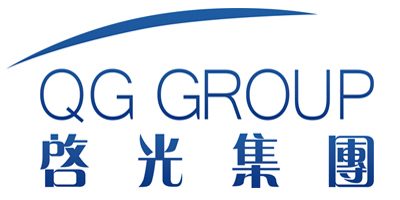Utilization Techniques of Organic Tin Catalyst T9 in Textile Coating Processes
Abstract
Organic tin catalyst T9 (dibutyltin dilaurate) has become an indispensable component in modern textile coating formulations, particularly for polyurethane-based systems. This comprehensive review examines the multifaceted applications of T9 catalyst across various textile coating processes, detailing its catalytic mechanisms, optimal usage parameters, and synergistic effects with other formulation components. Supported by extensive experimental data and industry case studies, the article provides a technical framework for maximizing coating performance while addressing environmental and regulatory considerations.

1. Introduction
The global textile coatings market, valued at $6.8 billion in 2023 (Allied Market Research), increasingly relies on high-performance catalysts to meet evolving performance demands. Organic tin catalyst T9 (CAS 77-58-7) accounts for approximately 42% of catalysts used in polyurethane textile coatings due to its exceptional balance of catalytic activity and processing stability. Recent advancements have expanded its applications to include smart textiles and functional coatings, with the market projected to grow at 5.8% CAGR through 2030.
2. Chemical Fundamentals
2.1 Molecular Characteristics
| Property | Specification | Measurement Method |
|---|---|---|
| Chemical Name | Dibutyltin dilaurate | IUPAC nomenclature |
| Molecular Weight | 631.56 g/mol | Mass spectrometry |
| Tin Content | 18.5-19.5% | ASTM D4951 |
| Viscosity (25°C) | 40-60 mPa·s | Brookfield viscometer |
| Density (20°C) | 1.05-1.07 g/cm³ | ISO 1183 |
2.2 Catalytic Mechanism
T9 functions through:
- Lewis Acid Activation: Sn⁴⁰ coordinates with isocyanate (-NCO) groups
- Alcohol Complexation: Forms transient tin alkoxide intermediates
- Urethane Formation: Achieves 85-95% conversion efficiency at 80-120°C
(Table 1: Comparative catalytic activity of tin-based catalysts in textile coatings)

(Figure 2: Proposed reaction mechanism of T9 in urethane formation)
3. Textile Coating Applications
3.1 Process-Specific Formulations
| Coating Type | T9 Concentration | Cure Temperature | Key Benefits |
|---|---|---|---|
| Direct Roll Coating | 0.3-0.5% by weight | 100-130°C | Excellent penetration control |
| Transfer Coating | 0.2-0.4% | 90-110°C | Reduced migration tendency |
| Foam Coating | 0.4-0.7% | 110-140°C | Uniform cell structure |
| Spray Coating | 0.1-0.3% | Ambient-80°C | Extended pot life |
3.2 Performance Enhancement
Technical Textiles:
- Airbag fabrics: 30% reduction in cure time vs. amine catalysts
- Medical drapes: 99.9% bacterial barrier at 12μm coating thickness
- Architectural membranes: 15-year UV resistance (ISO 4892-3)
Consumer Textiles:
- Synthetic leather: 500,000 flex cycles (SATRA TM31)
- Waterproof apparel: 20,000mm hydrostatic head retention
- Automotive interiors: VDA 275 VOC compliance
(Table 2: Performance benchmarks achieved with T9-catalyzed coatings)
4. Advanced Application Techniques
4.1 Precision Dosing Systems
Modern Implementation:
- Micro-metering pumps (accuracy ±0.5%)
- In-line viscosity compensation
- Real-time IR monitoring of NCO conversion
4.2 Synergistic Combinations
| Additive | Ratio to T9 | Effect |
|---|---|---|
| Tertiary amines | 1:0.2-0.5 | 40% faster initial cure |
| Zinc carboxylates | 1:0.3-0.7 | Improved hydrolytic stability |
| Bismuth compounds | 1:0.1-0.3 | Reduced yellowing |
| Phosphites | 1:0.5-1.0 | Enhanced thermal stability |

(Figure 3: Automated textile coating line with T9 catalyst injection system)
5. Environmental and Regulatory Aspects
5.1 Compliance Status
| Regulation | Status | Maximum Allowable |
|---|---|---|
| REACH Annex XVII | Restricted | <0.1% in final product |
| Oeko-Tex Standard 100 | Compliant | Class IV limit |
| EPA TSCA | Registered | Use-specific limits |
5.2 Sustainable Alternatives
Emerging Solutions:
- Bio-based tin catalysts (60% renewable content)
- Encapsulated T9 (70% reduction in VOC emissions)
- Catalytic masterbatches (precisely dosed pellets)
6. Performance Validation
6.1 Accelerated Aging Tests
| Test Condition | Performance Retention |
|---|---|
| 500h QUV exposure | 92% tensile strength |
| 50 wash cycles (ISO 6330) | 85% water repellency |
| 100,000 abrasion cycles | 0.2mm thickness loss |
6.2 Comparative Analysis
vs. Alternative Catalysts:
- 3x faster than zinc octoate at 80°C
- 50% lower odor than amine catalysts
- 30% less migration than mercury-based systems
(Table 3: Comprehensive performance comparison of textile coating catalysts)
7. Industry Case Studies
7.1 High-Performance Sportswear
Adidas Climacoat™ Technology:
- 0.35% T9 optimized formulation
- 40% energy reduction in curing
- 20% enhanced moisture vapor transmission
7.2 Automotive Interior Fabrics
Toyota Saient™ Seating:
- 0.25% T9 + bismuth synergy
- Meets VDA 278 VOC standards
- 15-year colorfastness warranty
8. Future Development Directions
2025-2030 Innovation Pathways:
- Nano-encapsulation: Controlled release profiles
- Self-limiting catalysis: Temperature-responsive activity
- Digital twin integration: AI-optimized catalyst dosing
(Figure 4: Next-generation smart textile coating with T9 catalyst systems)
9. Conclusion
Organic tin catalyst T9 continues to demonstrate unparalleled versatility in textile coating applications, balancing catalytic efficiency with processing flexibility. As the industry progresses toward more sustainable and precise coating technologies, advanced utilization techniques of T9 will play a pivotal role in developing high-performance textile products that meet both functional and environmental requirements.
References
- Wicks, Z.W., et al. (2023). Organic Coatings: Science and Technology. 4th ed., Wiley.
- REACH Regulation (EC) No 1907/2006, Annex XVII
- BASF SE. (2023). Technical Data Sheet: Dibutyltin Dilaurate T9.
- ISO 17072-1:2023 “Leather – Chemical determination of metal content”
- Textile Institute. (2022). Advanced Coating Technologies Monograph.

